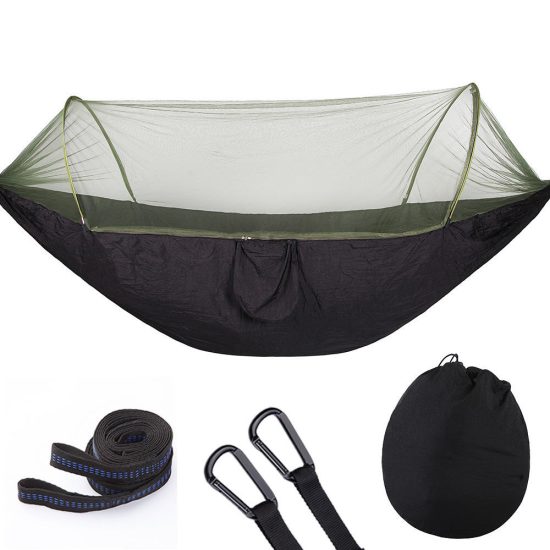When choosing a hammock, the material is an essential consideration as it affects the comfort, durability, and suitability for different environments. Here are some common hammock materials and their characteristics to help you make an informed choice:
- Cotton: Cotton hammocks are soft and comfortable, making them great for lounging. They are breathable and provide good airflow, which can be beneficial in hot climates. However, cotton hammocks are less durable and may stretch over time. They also require more maintenance, as they can be prone to mold and mildew if not dried properly after getting wet.
- Polyester: Polyester hammocks are known for their durability and resistance to fading and mildew. They are quick-drying and low-maintenance, making them suitable for outdoor use and humid environments. However, polyester may not be as breathable as other materials and can retain heat in hot weather.
- Nylon: Nylon hammocks are lightweight, compact, and easy to transport, making them popular among backpackers and campers. They are durable, quick-drying, and resistant to mildew. Nylon hammocks provide good breathability, which makes them suitable for hot climates. However, they can feel less soft and comfortable compared to cotton or polyester.
- Canvas: Canvas hammocks are made from a heavy-duty cotton fabric that is thick and sturdy. They are known for their durability and ability to support heavier weights. Canvas hammocks provide good comfort and breathability but may require more maintenance and take longer to dry compared to other materials.
- Sunbrella: Sunbrella is a popular outdoor fabric known for its UV resistance, fade resistance, and durability. Sunbrella hammocks are suitable for prolonged outdoor use and can withstand exposure to sunlight and harsh weather conditions. They are easy to clean and maintain, making them a good choice for long-lasting outdoor hammocks.
Consider the following factors when choosing the right hammock material:
- Comfort: Look for a material that offers the desired level of softness and breathability for your comfort preferences.
- Durability: Consider the expected usage and the environment in which you’ll be using the hammock to ensure it can withstand the conditions.
- Maintenance: Determine how much effort you’re willing to put into maintaining the hammock, such as drying, cleaning, and storage requirements.
- Weight and portability: If you plan to use the hammock for camping or backpacking, consider lightweight and compact materials like nylon.
Ultimately, the choice of hammock material depends on your specific needs, preferences, and the intended use of the hammock. It’s a good idea to test different materials if possible to determine which one offers the right combination of comfort, durability, and convenience for your outdoor relaxation.


